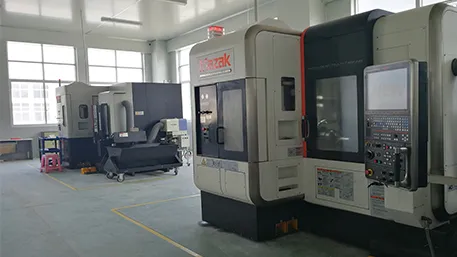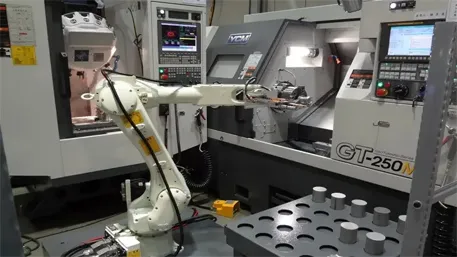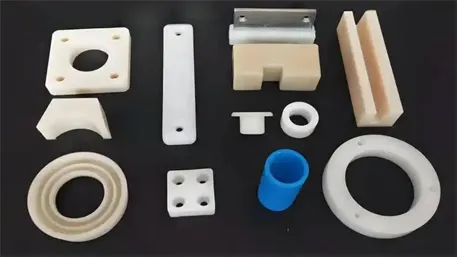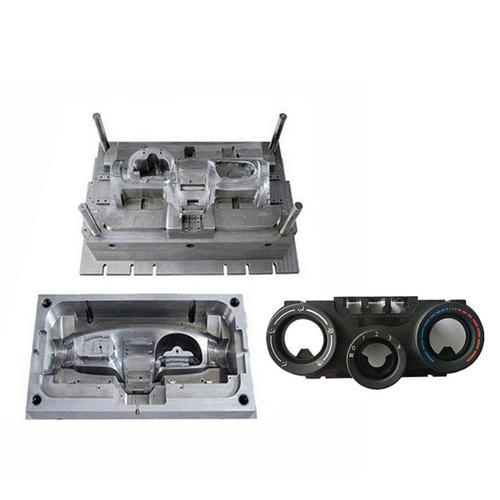
I. Basic Cognition of CNC Machining Service
1.1 What is CNC Machining Service?
- Higher Precision: It can stably achieve a tolerance of ±0.005mm (up to ±0.0002mm in some scenarios), far exceeding the ±0.1mm level of manual machining;
- Faster Efficiency: During batch machining, the efficiency of 5-axis CNC machine tools is 3-5 times that of traditional equipment;
- Strong Consistency: Computer control avoids manual errors, and the dimensional deviation of 1,000 parts can be controlled within 0.01mm.
1.2 Which Scenarios Require CNC Machining Service?
- Automotive Industry: New energy vehicle motor housings, battery brackets (requiring “CNC Milling + Turning composite process” with a tolerance of ±0.02mm);
- Medical Industry: Surgical instrument accessories, titanium alloy implants (needing to comply with ISO 13485 certification, with a surface roughness of Ra ≤ 0.8μm);
- Aerospace Industry: Engine blades, fuel pipelines (requiring “5-axis CNC machining” to withstand high-temperature materials such as Inconel alloy);
- Consumer Electronics: Mobile phone middle frames, radiators (needing “high-speed milling + high-gloss polishing” with a tolerance of ±0.05mm).
II. CNC Milling/Turning Service: Process Guide
2.1 Comparison of Mainstream Processes: Milling vs Turning
|
Process Type
|
Principle
|
Applicable Part Types
|
Material Compatibility
|
Typical Cases
|
|
CNC Milling
|
Tool rotation + workpiece movement for cutting
|
Parts with complex curved surfaces and polyhedrons
|
Aluminum alloy, stainless steel, plastic
|
Automotive gearbox housings, UAV frames
|
|
CNC Turning
|
Workpiece rotation + tool movement for cutting
|
Shaft-type and disc-type symmetric parts
|
Brass, titanium alloy, steel
|
Motor shafts, bearing rings
|
2.2 Special Process Requirements: When is 5-Axis CNC Machining Service Needed?
- The part has “complex spatial curved surfaces” (such as aerospace engine blades);
- Multi-surface machining needs to be completed in one clamping (such as medical joint parts to reduce clamping errors);
- The tolerance requirement exceeds ±0.005mm (such as core components of precision instruments).
III. Selection of Online CNC Machining Service
3.1 Core Selection Criteria
- Quotation Efficiency: Does it support “uploading CAD drawings → receiving a quotation within 1 hour”?
- Delivery Cycle: Can it meet “urgent needs”?
- Confidentiality Capability: How to ensure drawing security?
3.2 Reminders to Avoid Pitfalls: Watch Out for 3 Types of “Low-Price Traps”
- Trap 1: “Quotations without clear tolerances”—for example, only marking “CNC machining fee: $50/piece” without specifying the tolerance range, which may lead to price increases later on the pretext of “needing to improve precision”;
- Trap 2: “Hidden surface treatment fees”—for example, the quotation does not include “anodizing and electroplating”, and an additional 30%-50% fee is charged after actual machining;
- Trap 3: “Mandatory minimum order quantity requirements”—some service providers require “a minimum order of 100 pieces”, while standardized service providers support “ordering from 1 piece”, which is more friendly for small-batch prototype needs.
IV. Cost Transparency of CNC Machining Service
4.1 Quotation Composition: 3 Core Factors (Taking Aluminum Alloy Parts as an Example)
|
Cost Item
|
Proportion
|
Influencing Factors
|
Reference Range (100 Pieces)
|
|
Material Cost
|
30%-40%
|
Material type (30% price difference between 6061 aluminum and 7075 aluminum)
|
(150-)300
|
|
Machining Hour Cost
|
40%-50%
|
Process complexity (50% price difference between 5-axis and 3-axis)
|
(200-)500
|
|
Surface Treatment Cost
|
10%-20%
|
Treatment method (anodizing vs electroplating)
|
(50-)150
|
4.2 Reducing CNC Machining Service Costs
- Design Optimization: Reduce “unnecessary complex structures” (such as changing curved surfaces of non-critical parts to flat surfaces). Some service providers offer “free design optimization suggestions” and have helped a customer reduce machining hours by 30%;
- Bulk Tiered Pricing: The unit price for 100 pieces is (15, and the unit price for 1,000 pieces can be reduced to )8 (conventional industry bulk discount policy);
- Choosing Appropriate Materials: The machining cost of plastic parts (such as ABS) is only 1/3 of that of metal parts, which is suitable for non-load-bearing scenarios.
V. Real Cases
Case 1: Thin-Walled Part Machining for New Energy Vehicles (Customer Case of XiaMen Goldcattle)
- User Requirement: An automotive enterprise needed to machine “battery pack thin-walled brackets” (thickness 1.2mm, aluminum alloy 6061-T6), requiring “no deformation and a tolerance of ±0.03mm” with a delivery cycle of 7 days;
- Machining Challenge: Thin-walled parts are prone to deformation due to cutting force, and the qualification rate of traditional processes was only 60%;
- Solution:
-
- Use “vacuum suction cup fixtures” to fix workpieces and reduce clamping stress;
-
- Optimize cutting parameters (rotational speed 8,000rpm, feed rate 1,500mm/min);
-
- Conduct two-stage machining (leave 0.2mm allowance for rough machining, and finish machining to the required dimension);
- Result: The qualification rate increased to 98%, the delivery cycle was shortened to 5 days, and the cost was reduced by 18%.
Case 2: Machining of Medical Titanium Alloy Implants
- User Requirement: A medical equipment manufacturer needed to machine “artificial joint components” (titanium alloy Ti-6Al-4V), which had to comply with FDA certification and have a surface roughness of Ra ≤ 0.4μm;
- Solution: Adopt “5-axis CNC machining + electrochemical polishing”, conduct the entire process in a “clean room”, and provide “material inspection reports + dimensional inspection reports” for each batch of parts;
- Result: Passed the on-site FDA audit, with a 100% qualification rate for mass production.
VI. Strengthening Trust Signals
6.1 Core Qualification Certifications
- Quality Management System: ISO 9001:2015 (general), ISO 13485 (medical), AS9100D (aerospace);
- Industry Certifications: FDA (medical parts), IATF 16949 (automotive parts), ITAR registration (military-related);
- Equipment Certification: All CNC machine tools have passed the “German VDI/DGQ precision certification”, and testing instruments are calibrated annually (calibration reports are provided).
6.2 Authoritative Data Support
- Production Capacity: High-quality service providers machine more than 50,000 parts per month, among which high-precision parts (tolerance ≤ 0.005mm) account for 35%;
- Customer Coverage: Serve more than 2,000 customers worldwide, among which automotive industry customers (such as BYD and Tesla supply chains) account for 40%, and medical industry customers account for 25%.
6.3 Real User Feedback
- An automotive component customer: “After choosing a high-quality online CNC machining service, I received a quotation within 30 minutes of uploading the drawings. 100 brackets were delivered in 7 days, and all dimensional deviations were within ±0.02mm, which was 5 days faster than the previous supplier.”
- A medical equipment customer: “Their confidentiality measures are in place. The system automatically encrypts the drawings after upload, and they provided a ‘data destruction certificate’ within 24 hours after we requested data deletion after machining. We are very assured.”
Appendix: Frequently Asked Questions (FAQ) about CNC Machining Service
- Q: For small-batch parts (1-10 pieces), is online service or local manufacturer more suitable?
- Q: Can CNC Machining Service process plastic parts?
- Q: How to confirm whether the machining precision of a service provider meets the standards?






